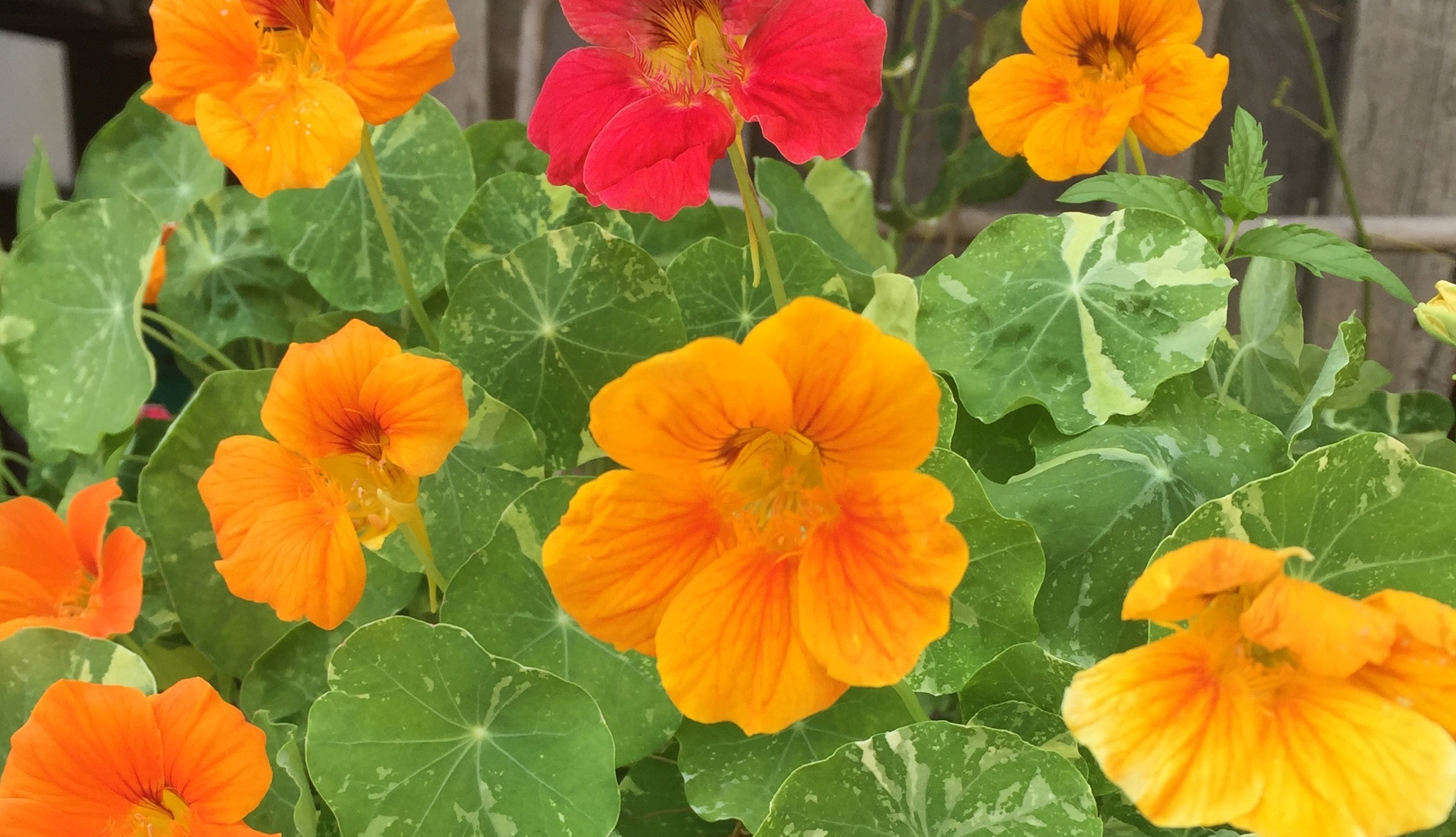
Close-enough pronunciation: “Nah-stir-shums”
Spicy little things and tough too.
I wouldn’t be surprised if you have heard of this one. It probably puts you in the 1% of Americans who have, but it’s not completely erased from memory.
And now, some actual statistics. According to Google Trends (as of September 2018), you are most likely to have searched for nasturtiums if you live in…Alaska! Fascinating.

It does require a little patience to grow nasturtiums. I don’t often see them at nurseries. They don’t transplant well, but it will save you time and money to grow nasturtiums yourself from seeds. I buy one cheap packet of seeds
every Spring and place them all over my yard.
As long as you are patient with the little sprouts, nasturtiums grow well from seed, which might mean getting your hands dirty. But, if you are willing to plant them yourself, you will save a bundle over buying seedlings. You do need some patience. The seedlings are straggly for a little while.

When they finally mature and start to bloom, the flowers are abundant. The colors are absolutely bright and brilliant. Keep scrolling for a stunning display of the wide variety of nasturtium colors you can find online.
As an Amazon Associate I earn from qualifying purchases.
You can eat the flowers and the leaves. The flavor is spicy. They make beautiful butters and add a peppery bite to salads. The leaves and flowers can be brewed into tea. Peppery tea. I think I’d have fun mixing fresh nasturtium tea with complementary flavors, like lemon, orange and lavender.
One of the best characteristics is the sturdiness of the flowers. These blooms might look like tissue paper, but they are surprisingly long-lasting in an arrangement.
For the perfect impression and an affordable alternative to orchids, pick a bowl full of nasturtiums and place one bloom on each plate just before your guests arrive for brunch. You can use the leaves as garnish for hors d’oeuvres and platters.
My grandmother, Peg (born 1929), loved nasturtiums. Her sons could identify the plants on sight. Proof positive that we only started to forget this herb recently.
I was on vacation when she passed away in 2016. In my grief and the confusion to pack up and get home asap, I forgot to send flowers to the funeral home. I had a wonderful grandmother who adored her flower gardens, and I…forgot…to…send…flowers…to…her…funeral. Ouch.
It’s not that there weren’t any flowers there. My parents and relatives ordered beautiful, big arrangements with sashes on them: Mother, Grandmother, Aunt, Sister. But, when I arrived at the wake and realized there was nothing from me to her, I felt hollow.
The afternoon before her funeral, I was wandering through the garden in search of some peace and calm. It was mid-August. My nasturtium vines were covered in blooms. What a saving grace.
I picked about 20 flowers and honored Gram’s Irish heritage with a beautifully-simple, hand-gathered arrangement: one big lime-green hydrangea circled by orange and white nasturtium flowers.
Thanks to offcenterfarm.com for letting me take photos of her beautiful variegated nasturtiums for this article.

As promised, here’s a display of some of the stunning colors in the nasturtium rainbow.
As an Amazon Associate I earn from qualifying purchases.
View the whole forgotten herb series.

















 Close enough pronunciation: “Bore-uhge”
Close enough pronunciation: “Bore-uhge”

